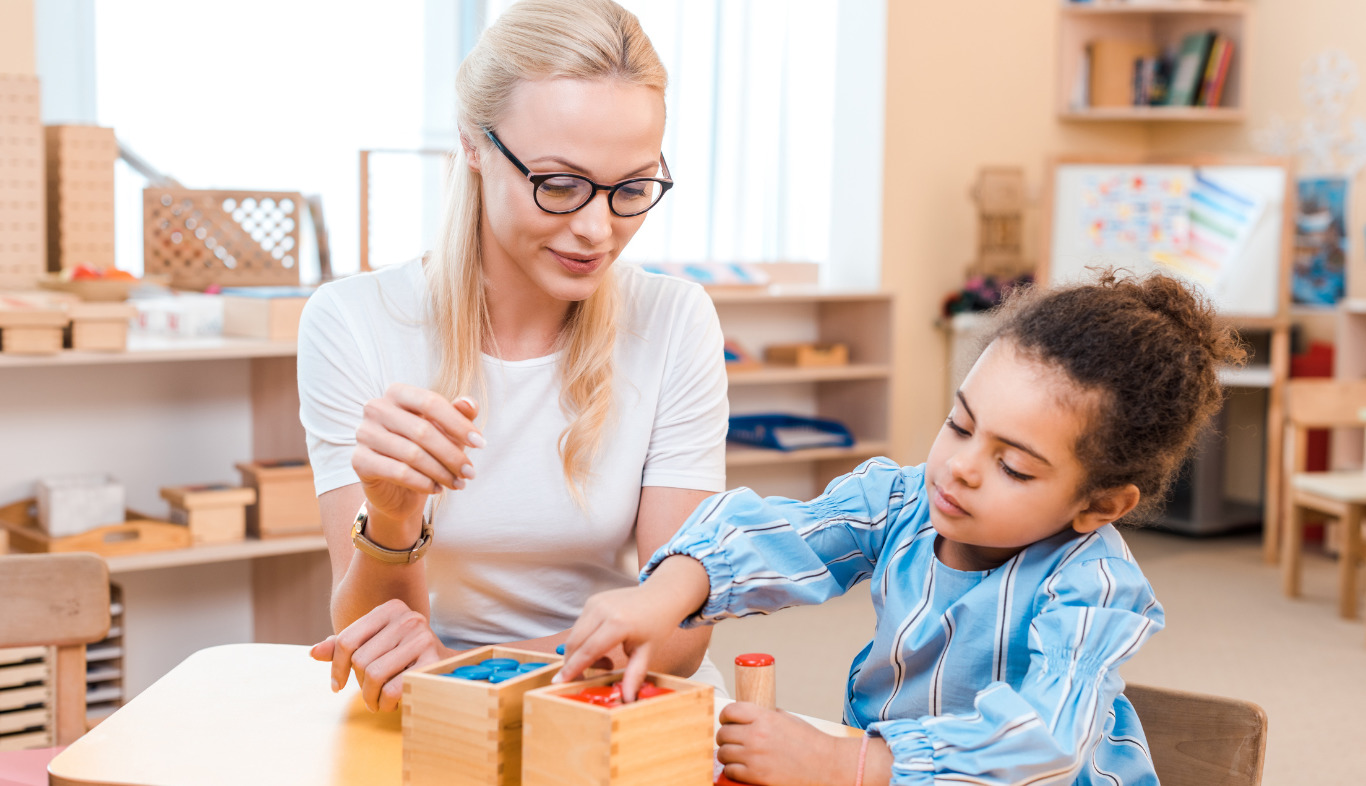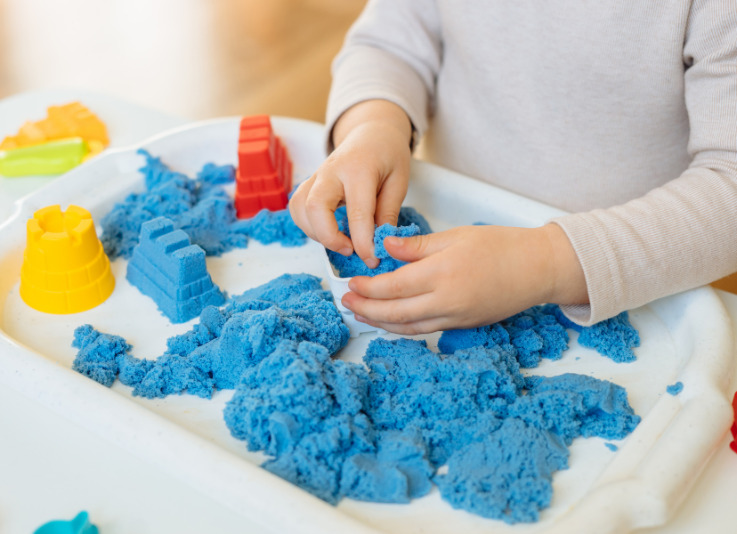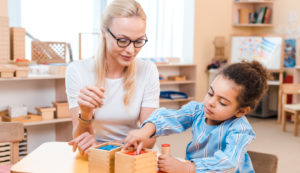In recent years, sensory integration has become a part of an important discussion in education. But it is talked about more frequently since the pandemic 2019 hit and outdoor time and the active play of children have declined dramatically. The majority of children spend more time watching screens than experiencing the world through their senses. Resulting in a varied range of sensory disorders.
To overcome this problem, schools in America and parents must identify, assess and diagnose sensory-sensitive needs in children and provide the necessary aid to address those needs.
What is Sensory Integration?
Sensory integration (SI) theory was developed by Dr. A. Jean Ayres in the mid-70s. According to this theory, we usually perceive that we have 5 senses – touch, smell, sight, hearing, and taste. But actually, we have seven senses. The other two are vestibular and proprioceptive. The vestibular sense is related to the body and movement; whereas the proprioceptive sense gathers information through muscles, bones, and joint movements. All 7 senses supply sensory information to the brain.
This information is then prioritized and organized to respond adaptively (Noddings, 2017a) has stated that Author Alicia Noddings references Carolyn Cantu’s article about stress management and self-regulation (2002). In this article about self-regulation and stress management, Cantu indicates that over 80% of the nervous system processes sensory information. This, in turn, enhances awareness and organizes the brain program, which affects perception, cognition, and knowledge.
Simply put, sensory integration encapsulates how we experience, interpret, and react to (or ignore) information coming from our senses. It is important in all the things that we need to do on a daily basis, such as getting dressed, eating, moving around, socializing, learning, and working.
Montessori education is well known to inculcate sensory integration in the classroom setting by providing a developmentally appropriate environment, tools, and multi-layered sensory opportunities to address the needs of children who are developing their senses – sensory sensitivity.
Importance of Sensory Integration Strategies
The use of intentionally designed materials, the use of senses, and the incorporation of movements in a rich sensory environment benefit the children in four main ways:
- Increased ability to focus on relevant materials in different environments. Children tend to learn best and retain information when the senses are engaged in activities.
- Reduced rate of self-injuries. It also calms an anxious or frustrated child as their senses get engaged in a different environment.
- General improvement of the nervous system results in higher cognitive activity; such strategies and tools help children become more perceptive, aware, and logical.
- Broaden and refine the senses. Once a child gets involved in various sensory tools, they develop their senses on a broader path; they also learn to interact socially.
How Does Montessori Education Help in Promoting Sensory Integration Among Children?
It was Maria Montessori’s belief that the first six years of a child’s life are foundational years when children experience rapid growth. In these years, intellectual development happens at a fast pace, while sensorial integration fosters and nourishes this development.
Dr. Montessori also referenced reflecting on the environment when looking at the cause of challenging behaviors in the classroom. Children’s behaviors, both good and bad, are a communication from the child (Granke, 2007: 231-243). For trained teachers, observing and reflecting on behaviors in the classroom can provide guidance for how to meet the individual needs of each child.
Montessori Education and Sensory Integration Strategies
According to Jennifer Hoyt’s Sensory Integration Materials in Montessori Classrooms, Montessori methods provide enough space for the movement of learning through the senses. When an educator adds enough sensorial materials in a classroom, it proves beneficial for the children to meet their varied needs.
In traditional classrooms, every child’s learning capabilities are treated the same. The educator just directs all the children in the same manner. In such an environment, some children may get confused with the resources and materials and lose interest. On the other hand, in a Montessori classroom, the environment is based on the interests and developmental stage of the child, enabling them to explore at their own pace. In such an environment, a child gets the proper space and materials to thrive and hone their skills to their full potential.
The Outcomes of Sensory Integration in the Montessori Curriculum
The Montessori Method incorporates sensory integration to meet the developmental needs of every child through various activities, such as sensorial and practical life lessons. These kinds of opportunities help develop manipulative skills, eye-hand coordination, and creative thinking skills.
Children can engage in a variety of these activities inside the classroom, and when appropriate, they can also be carried out outside. The purpose of adopting sensory integration strategies is to assist the children in being alert enough to concentrate on their learning.
Benefits of Sensory Integration to the Child Who Attends the Montessori School
Following are the Benefits of Sensory Integration Inside the Montessori Classroom:
- Executive Functioning: Montessori education helps children develop a chief executive function that increases periods of concentration and working memory. It helps children to solve complex problems by implementing reasoning and excellent planning skills independently.
- Eye-hand coordination: Montessori activities such as knobbed cylinders, transferring activities, sewing, etc. help children to develop better eye-hand coordination.
- Motor Skills: Montessori curriculum has varied activities that help in developing both fine motor and gross motor skills. These activities further develop prehension (ability to use the thumb against the fingers functionally), bimanual coordination (ability to use the two hands together in a functional manner), and midrange control (ability to control a movement throughout the full excursion).
- Discrimination and order: The sensorial activities in the Montessori curriculum help children broaden and refine the child’s senses. Every activity from the pink tower to thermic tablets to mystery bags, help children with discrimination and order. It also helps them become more logical, perceptive, and aware.
- Perceptual and Cognitive Skills: Montessori activities help children recognize the differences between varied sizes, weights, and volumes. They have an understanding and concrete experience of a continuum or range.
Benefits of Sensory Integration Outside the Classroom in the Montessori School
Noddings, A. (2017) has described in the research ‘When sensory sensitivity requires intervention: Assessment and treatment of sensory-sensitive children’ that a few movement activities like jumping, yoga, and wall push-ups are beneficial to improve sensory integration and can be incorporated into day-to-day Montessori classrooms.
An easy way to promote sensory integration is to allow enough space for the child for frequent moves. These activities help in channelizing the senses of the child, and in building gross motor skills.
Montessori education also promotes going out on excursions, music, dance, physical exercise, arts, etc. to support the needs of diverse children. Children naturally fidget interest in the work and develop patience, persistence, resilience, and problem-solving ability. Sensory integration works best when varieties of movement opportunities are available along with the tools.
What Else Can Be Included in The Montessori Classroom for Sensory Integration?
In addition to the resources used in Montessori Classrooms, many more activities and tools can be included for the children. These can be placed over a ‘sensory shelf’ for precise learning. Small fidgets, stretch/resistance bands, and squeeze balls of varying textures and firmness levels are hand-held tools that can be helpful for the child in channelizing the senses.
Some large-scale tools such as hopper balls, hanging bars, mini trampolines, or balance boards can be incorporated into the classroom. These can be used by individual children or they can be used in groups.
Noise-cancellation headphones, colored glasses, clay dough, ankle/wrist weights, and heavy lifting are some resources that can aid children in integrating their senses.
Final Words
The relationship between the child and their environment is significant. Children should be effectively and genuinely introduced to the learning materials or ideas they are attempting to master. Therefore, Montessori classrooms are ideal for encouraging sensory integration (SI) at a young age; they provide an optimal opportunity for children to attain the best results in their overall development.
References
- Cantu, C. O. (2002, November). Self-regulation and stress management. The Exceptional Parent 32(11), 41–47.
- Dunn, W. (2001). The sensations of everyday life: Empirical, theoretical, and pragmatic considerations. The American Journal of Occupational Therapy, 55(6), 608-620. https://doi.org/10.5014/ajot.55.6.608
- Granke, J. (2007). Doors of perception: Sensory integration for Montessori classrooms. The NAMTA Journal, 32(1), 231-243.
- Hoyt, J. (2018). Including sensory integration materials in a Montessori classroom to improve behavior outcomes [Master’s Thesis (M.S. Ed.), University of Wisconsin–River Falls]. https://amshq.org/-/media/Files/AMSHQ/Research/Action-Research/Including-Sensory-Integration-Materials-in-a-Montessori-Classroom-to-Improve-Behavior-Outcomes.ashx
- Luborsky, B. (2014). Occupational therapy and Montessori – kindred spirits: Moving towards a scientific and medical pedagogy. The NAMTA Journal, 39 (3). https://files.eric.ed.gov/fulltext/EJ1183213.pdf
- Noddings, A. (2017a). Supporting sensory-sensitive children in a sensory-intensive world. Montessori Life, 29(1), 34–39. https://amshq.org/About-Montessori/Montessori-Articles/All-Articles/Supporting-Sensory-Sensitive-Children-in-a-Sensory-Intensive-World
- Noddings, A. (2017b). Classroom solutions for sensory-sensitive students. Montessori Life, 29(2), 45-49. https://amshq.org/About-Montessori/Montessori-Articles/All-Articles/Classroom-Solutions-for-Sensory-Sensitive-Students
- Noddings, A. (2017c). When sensory sensitivity requires intervention: Assessment and treatment of sensory-sensitive children. Montessori Life, 29(3), 38–43. https://amshq.org/About-Montessori/Montessori-Articles/All-Articles/When-Sensory-Sensitivity-Requires-Intervention










